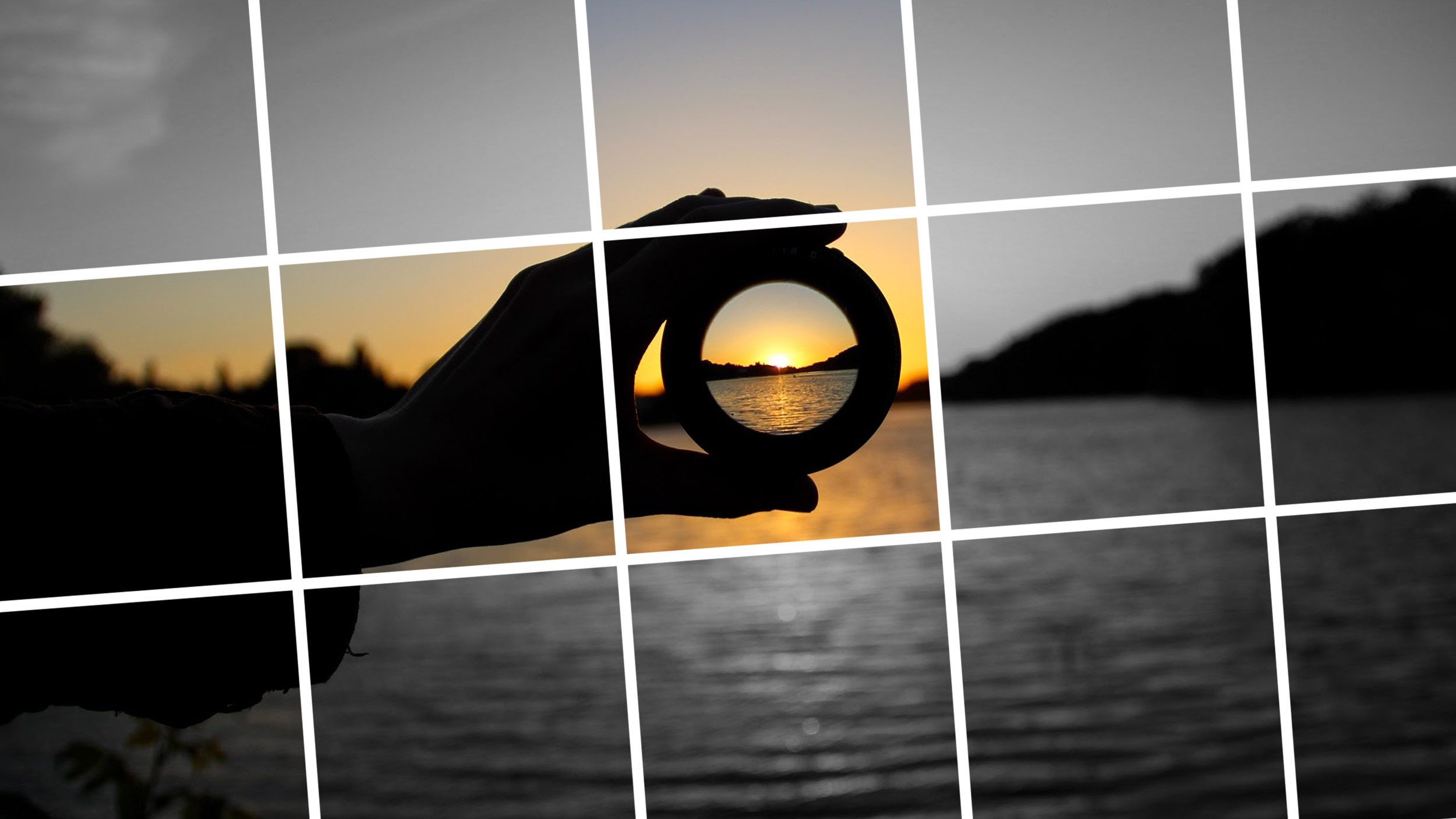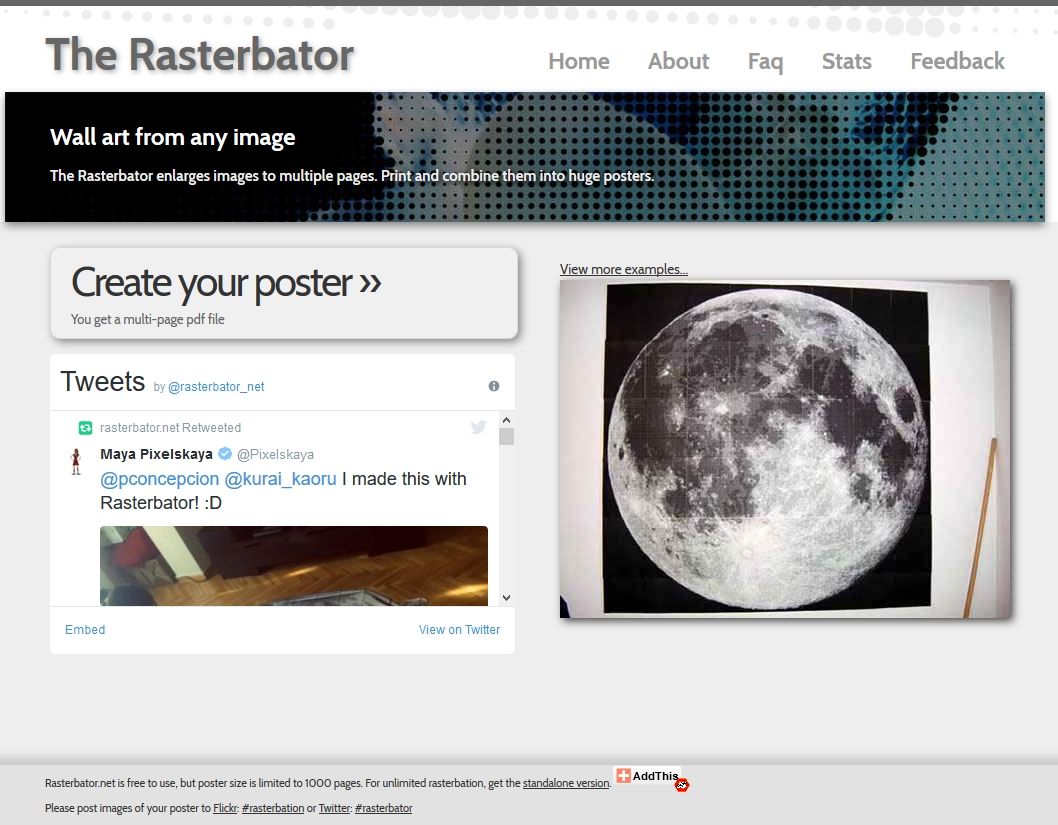Rasterbator: The Ultimate Guide To Unlocking Your Digital Art Potential
Hey there, digital art enthusiasts! If you've ever heard the term "rasterbator" and wondered what it's all about, you're in the right place. Rasterbator is more than just a buzzword; it's a fascinating world of creativity, technology, and innovation. Whether you're a seasoned graphic designer or a curious beginner, this article dives deep into everything you need to know about rasterbator. So, grab your favorite drink, and let's get started!
Let me set the scene for you. Imagine you're working on an epic project, and suddenly you come across this term "rasterbator." What does it mean? Is it some kind of superpower in the digital art universe? Or maybe it's a hidden technique that only the pros know about? Well, hold on tight because we're about to uncover the truth behind rasterbators and why they matter in the world of digital design.
This article isn't just another boring guide; it's your ticket to understanding rasterbators like a pro. We'll break down the basics, explore advanced techniques, and even dive into some mind-blowing tips that will elevate your skills. By the end of this, you'll be ready to take on any rasterbator challenge with confidence. So, let's not waste any more time and dive right in!
- Solar Movie Your Ultimate Guide To Streaming Movies For Free
- Sflix Your Ultimate Streaming Haven For Movies And Series
What Exactly is a Rasterbator?
Alright, let's start with the basics. A rasterbator, in simple terms, is someone who specializes in creating or manipulating raster images. Now, don't get intimidated by the fancy name. Raster images are basically digital images made up of pixels, and they're everywhere! From your favorite memes to high-resolution photos, raster images dominate the digital world. And guess what? Rasterbators are the wizards behind these creations.
Rasterbators use powerful software like Photoshop, GIMP, and others to bring their ideas to life. They're the ones who can turn a blurry image into a masterpiece or create stunning visual effects that leave you in awe. So, if you've ever wondered how those incredible digital artworks are made, now you know – it's all about the rasterbator magic!
Why Should You Care About Rasterbators?
Here's the deal. Whether you're into graphic design, digital art, or even just sharing memes on social media, understanding rasterbators can give you a serious edge. Think about it – every time you see a viral image or an eye-catching advertisement, chances are a rasterbator was involved. They're the unsung heroes of the digital world, and knowing their tricks can help you create content that stands out.
- Nippyfile The Ultimate Guide To Streamlining Your File Management
- Futbollibre Your Ultimate Guide To The World Of Free Football Resources
Plus, the demand for skilled rasterbators is skyrocketing. With the rise of digital media, companies are always on the lookout for talented individuals who can create stunning visuals. So, if you're thinking about a career in digital art or design, mastering rasterbation might just be your ticket to success. Who knew playing with pixels could lead to such awesome opportunities?
Understanding Raster Images: The Rasterbator's Playground
Now that we know what a rasterbator is, let's talk about their playground – raster images. Raster images are made up of tiny squares called pixels, and each pixel contains color information. This means that raster images can be incredibly detailed, but they also have their limitations. For instance, if you zoom in too much, the image can become pixelated and lose its sharpness. That's where the rasterbator's expertise comes in – they know how to work around these limitations and create stunning visuals.
Some common formats for raster images include JPEG, PNG, and GIF. Each format has its own strengths and weaknesses, and a good rasterbator knows exactly which one to use for different projects. Whether you're designing a logo, creating a digital painting, or editing a photo, understanding raster images is key to success. And trust me, once you start experimenting with these formats, you'll be hooked!
Key Characteristics of Raster Images
- Resolution-dependent: Raster images are resolution-dependent, meaning they can lose quality when resized.
- High detail: They can capture intricate details, making them perfect for photography and digital art.
- Wide range of colors: Raster images support millions of colors, allowing for vibrant and realistic visuals.
- File size: The more pixels an image has, the larger the file size, which can be a consideration for web design.
Tools of the Trade: What Rasterbators Use
Every rasterbator has their go-to tools, and these tools are like their secret weapons. From powerful software to high-resolution monitors, the right gear can make all the difference. Let's take a look at some of the most popular tools in the rasterbator's arsenal:
Software
- Adobe Photoshop: The industry standard for raster image editing, Photoshop offers a wide range of features for creating and manipulating images.
- GIMP: A free and open-source alternative to Photoshop, GIMP is a powerful tool for rasterbators on a budget.
- Krita: Perfect for digital painters, Krita offers a user-friendly interface and a wide range of brushes.
Hardware
- Graphics tablets: Devices like Wacom tablets allow rasterbators to draw and paint with precision.
- High-resolution monitors: A good monitor ensures that rasterbators can see every detail in their work.
- Powerful computers: Editing large raster images requires a lot of processing power, so a beefy machine is essential.
The Art of Rasterbation: Techniques and Tips
Alright, let's talk about the fun part – the techniques! Rasterbation is all about creativity, and there are endless ways to explore this art form. From photo retouching to digital painting, the possibilities are truly limitless. Here are a few techniques that every rasterbator should know:
Photo Retouching
Photo retouching is one of the most common rasterbation techniques. It involves enhancing or altering photographs to achieve a desired effect. Whether you're smoothing out skin imperfections or adding dramatic lighting, photo retouching can transform an ordinary image into something extraordinary.
Digital Painting
Digital painting is another popular technique among rasterbators. It allows artists to create stunning visuals using digital tools. With the right software and a graphics tablet, you can mimic traditional painting techniques or explore new and innovative styles. The best part? You can experiment without worrying about making mistakes – just hit undo and start again!
Creating Textures
Textures are a great way to add depth and interest to your raster images. Whether you're creating a realistic wood grain or a fantasy-inspired landscape, textures can take your artwork to the next level. Many rasterbators use brushes and filters to create custom textures that enhance their designs.
Common Challenges Faced by Rasterbators
Let's face it – rasterbation isn't all rainbows and unicorns. There are challenges that every rasterbator encounters along the way. From dealing with large file sizes to managing color accuracy, these challenges can be frustrating. But don't worry – with the right knowledge and tools, you can overcome them. Here are a few common challenges and how to tackle them:
Managing File Sizes
Large raster images can be a pain to work with, especially when it comes to web design. To manage file sizes, rasterbators often use compression techniques like JPEG or WebP. These formats reduce file size without sacrificing too much quality. Additionally, optimizing images for the web can help improve loading times and enhance user experience.
Color Accuracy
Color accuracy is crucial for rasterbators, especially when working on projects that will be printed. Calibrating monitors and using color profiles can help ensure that colors look consistent across different devices. It's also important to work in the right color mode – RGB for digital projects and CMYK for print.
The Future of Rasterbators
So, where is the world of rasterbators heading? With advancements in technology, the possibilities for digital art are expanding rapidly. New software and hardware are constantly being developed, offering rasterbators more tools to explore their creativity. Additionally, the rise of AI and machine learning is opening up exciting new avenues for digital artists.
But here's the thing – no matter how advanced the technology gets, the human touch will always be essential. Rasterbators bring their unique perspectives and creativity to the table, creating art that resonates with people on a deeper level. So, while the future is bright, the core of rasterbation will always be about passion and innovation.
How to Become a Pro Rasterbator
Becoming a pro rasterbator isn't something that happens overnight. It takes practice, dedication, and a willingness to learn. Here are a few tips to help you on your journey:
- Practice regularly: The more you practice, the better you'll get. Set aside time each day to work on your skills.
- Learn from others: Follow tutorials, watch videos, and study the work of other rasterbators to gain inspiration and new techniques.
- Experiment: Don't be afraid to try new things. The more you experiment, the more you'll discover about your own style.
- Stay updated: Keep up with the latest trends and technologies in the digital art world. This will help you stay ahead of the curve.
Conclusion: Embrace Your Inner Rasterbator
And there you have it – everything you need to know about rasterbators and why they matter in the world of digital art. From understanding raster images to mastering advanced techniques, the journey of becoming a rasterbator is both challenging and rewarding. So, whether you're a beginner or a seasoned pro, remember to have fun and let your creativity shine.
Now it's your turn! Share your thoughts in the comments below. Are you already a rasterbator, or are you just starting out? What tips and tricks have you discovered along the way? And don't forget to share this article with your fellow digital art enthusiasts. Together, we can build a community of passionate rasterbators who inspire and support each other!
Table of Contents
- What Exactly is a Rasterbator?
- Why Should You Care About Rasterbators?
- Understanding Raster Images: The Rasterbator's Playground
- Tools of the Trade: What Rasterbators Use
- The Art of Rasterbation: Techniques and Tips
- Common Challenges Faced by Rasterbators
- The Future of Rasterbators
- How to Become a Pro Rasterbator
- Conclusion: Embrace Your Inner Rasterbator
- How To Search People Free Your Ultimate Guide To Finding Anyone Online
- Unlock The Magic Of Cineb Your Ultimate Guide To Streaming Bliss

Rasterbator

Rasterbator wall art or poster

Rasterbator Alternatives and Similar Apps & Services AlternativeTo